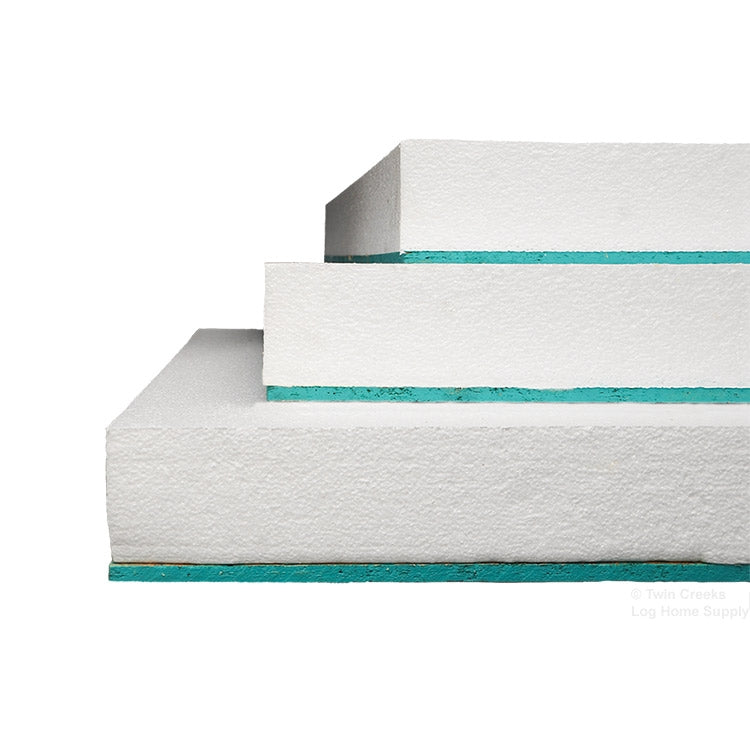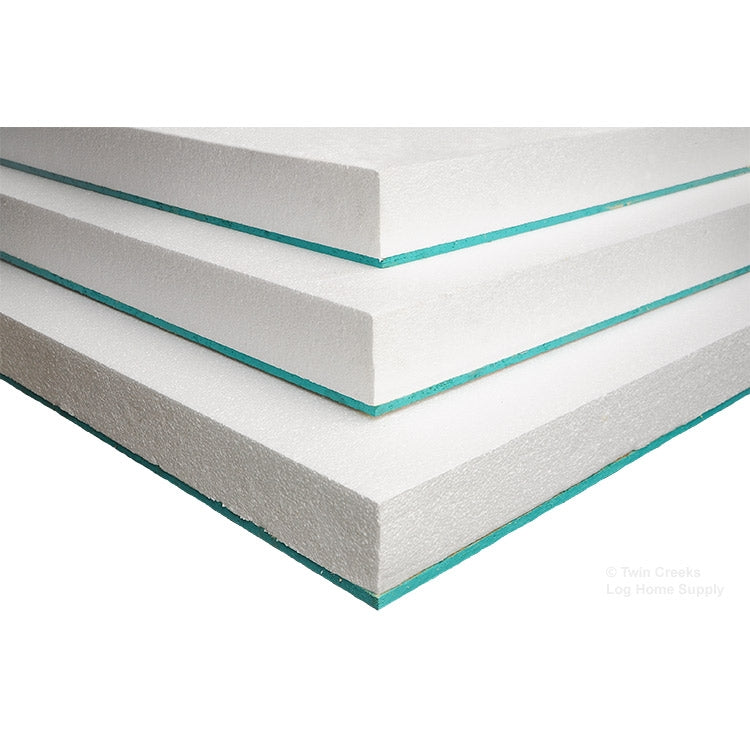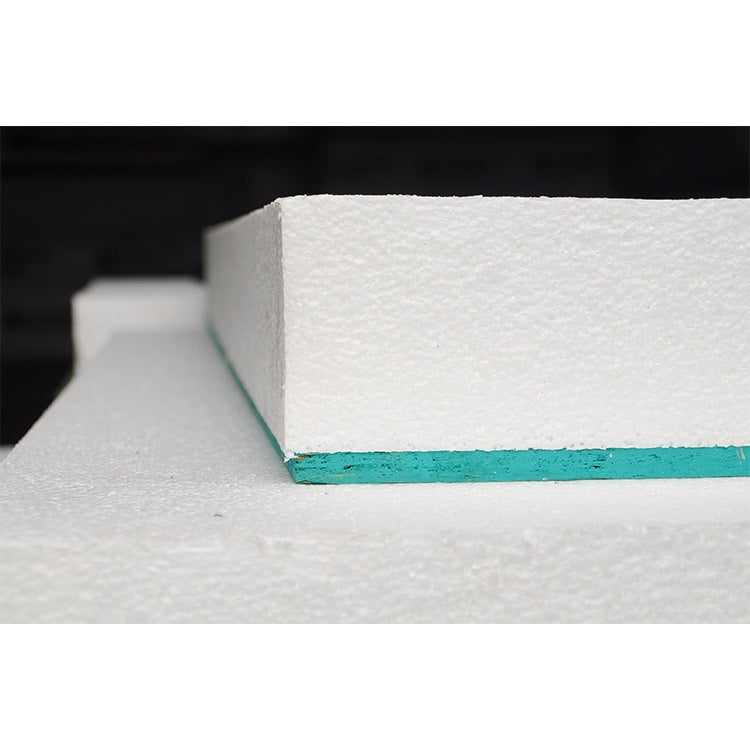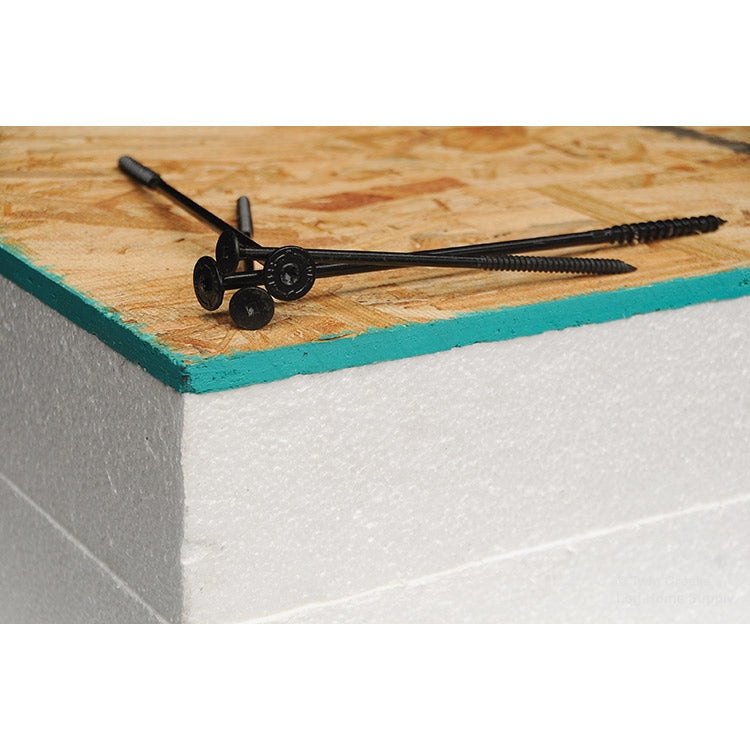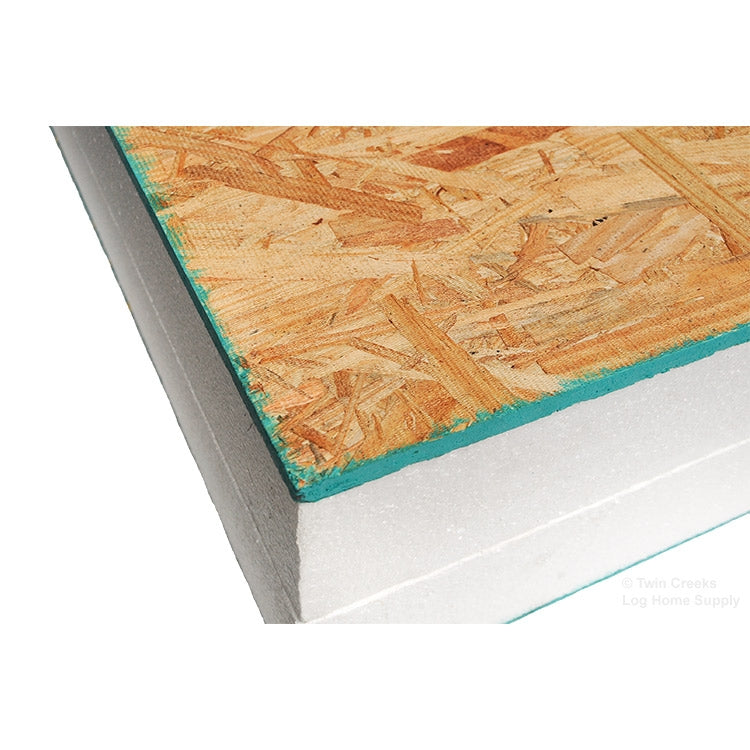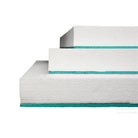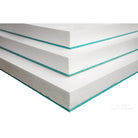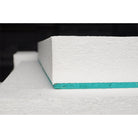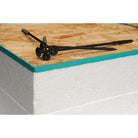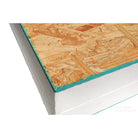Nail Base EPS Foam Panels
OSB prices change frequently. Prices represent the latest known market price and are subject to change. Please contact us for an up-to-date quote.
Details
Expanded Polystyrene (EPS) Roof Insulation is a lightweight, closed-cell foam insulation that is perfect for built-up roofing applications used in conjunction with exposed timber rafters. Built-up roofing methods allow for all the roof insulation to be fastened above interior ceiling decking and beams. This provides an effective alternative to conventional insulations materials such as fiberglass batts and blown rock wool. Our Nail Base EPS Foam Panels are manufactured pre-bonded with 3/8" OSB plywood sheathing.
Common Uses for EPS Foam Insulation Panels:
• Residential Built Up Roofing: Such as exposed beam ceiling configurations are an integral part of modern timber construction with exposed beams. The timber beams are placed first, followed by a layer of tongue and groove decking. From that point, a layer of foam panel insulation is applied replacing the need for conventional fiberglass batts or blown rock wool insulation.
• Commercial Built Up Roofing.
• Sidewall Insulation.
Features and Benefits Nail Base EPS Roof Insulation:
• Consistent R-Value - EPS Foam R-Values will stay consistent due to its exceptional stability and resistance to compression.
• Cost Efficient - EPS Foam Panels have a lower cost per R-value than many other insulation products, resulting in measurable energy savings over time.
• High Quality 7/16" OSB Sheathing - Nail Base EPS foam panels are manufactured with high quality OSB plywood sheathing pre-bonded to each panel using a high strength construction grade adhesive for a uniform, reliable, timesaving fastening surface.
• Dimensionally Stable - EPS foam panels remain dimensionally stable over the life of your roof and moisture has little to no effect on stability.
• Lightweight Construction - Ensures minimal weight on the roof and makes the panels easy to handle.
• Easy Installation - Each panel can be easily cut to fit, tightly joined together with other panels and fastened securely.
Nail Base EPS Roof Insulation Specifications:
• R-Value: R4 per inch of depth.
• Available Width: 4'
• Available Lengths: 8' lengths are standard. Lengths up to 16' are available for special order.
• Available Depths: Minimum thickness of 3 1/2" up to a maximum thickness of 40".
• Available Nail Base OSB Sheathing Lengths: Available in 8',9',10',12', and 16' lengths. Only 4' widths are available for Nail Base OSB Sheathing.
• Nail Base OSB Sheathing Thickness: 7/16"
• Typical Lead Time: This is a special-order product. Please allow 2-3 weeks for production.
Common EPS Nail Base Roof Insulation Panel Sizes:
• 4'x8'x4" - (3-5/8" Foam + 7/16" OSB Sheathing)
• 4'x8'x6" - (5-5/8" Foam + 7/16" OSB Sheathing)
• 4'x8'x7 3/4" - (7-3/8" Foam + 7/16" OSB Sheathing)
• 4'x8'x9 3/4" - (9-3/8" Foam + 7/16" OSB Sheathing)
**These are pre-quoted sizes, please call us to request a custom quote if you require a different size than what is listed.**
Storage of EPS Foam Insulation Panels Prior to Installation:
• EPS Foam Panels must be protected from exposure from the elements and must not be stored in direct ground contact.
• Set aside a level spot to store panels to ensure they will not lean or tip over.
• Lay panels flat on "sticking" lumber (such as 2x4's laid on their side) at least 3 inches from the ground.
• Place sticking lumber close enough together so that the panels will not sag, use 3 or more sticks if needed for longer lengths.
• Try to organize your panel delivery for efficiency (i.e. store panels from the first floor separate from panels for the second floor, and so on.).
• Mark individual panels so that you can identify panels for each specific place as you need them.
• We recommend moving and setting EPS foam panels with the help of at least one other person.
Fastening Nail Base EPS Roof Insulation: Exposed Beam Ceiling Built-Up Roofing
We recommend a flathead structural wood screw (such as a Headlok Panel Fastener) that passes through all the layers of roofing material to the beam. The screw should be measured to penetrate through each layer included in the insulation membrane and at least 2" into the structural beam. The insulation membrane typically includes OSB sheathing, the EPS foam panel, house wrap or vapor barrier, ceiling decking material or gypsum board and the interior beam. Be aware of where your beams or studs are to fasten into the middle of the beam. This ensures a strong point of anchor and to prevent potentially drilling through ceiling decking.
Product Resources:
• EPS Thermal Insulation Performance Requirements
• EPS Life Cycle Analysis
• SIP Roofing Panel Connection Diagrams
• Nailbase Panel Installation Instructions
Reviews
Product Questions
Product Questions
-
What is the best fastener to use for these?
The majority of your roofing materials will be attached to the OSB sheathing attached to the ESP panels. The panels themselves need to be fastened to withstand both the weight of the roof and any environmental debris like snow, leaves, limbs etc. We recommend Headlok Panel Fasteners because of their guaranteed corrosion resistance, no need for pre-drilling, aggressive thread and strong pull-down strength. For more detailed information on HeadLok Panel fasteners please visit our product page at: https://www.shoptwincreeks.com/headlok-panel-fasteners.html
-
What is an "R" value?
According to the United States Department of Energy, an R-Value is the measurement used for thermal resistance. The higher the R-Value the more effective an insulation will be. The R-Value depends on the type of insulation, how thick it is, and its density. In most cases, temperature, aging and moisture accumulation also affects R-Value. If you're insulating using multiple layers of insulation, add the R-values of each individual layer for the total effective R-Value of the Insulation.
-
Do I need to seal the seam where the foam panels meet each other when I install them? If so, what do I need to use?
Each joint between EPS panels should be sealed to prevent thermal exposure, moisture penetration and excessive airflow. Taping each joint with SIP tape is recommended by the manufacturer only for installation in high-humidity climates. In most cases, the best practice to accomplish this is to apply 3 parallel 1/4" beads of caulk vertically along the foam edges at each corner. In most cases, low-expanding polyurethane foam is the best option but, urethane caulk works well also. Caulk is a better option in high-humidity, and low-temperature conditions.
-
What is the best way to cut these?
There are many different options when cutting EPS foam. How many panels you need to cut and the thickness of the panels will influence which tool would be the most economical to use. To accommodate the OSB sheathing attached to the Nail base EPS Foam Panels, a miter saw is convenient for its mobility and maneuverability. If you expect to need a high amount of cuts, a table saw is a better option so many panels can be cut based on the same set up.

